-
 Bitcoin
Bitcoin $118400
0.47% -
 Ethereum
Ethereum $3836
2.20% -
 XRP
XRP $3.157
2.98% -
 Tether USDt
Tether USDt $0.9999
-0.03% -
 BNB
BNB $801.5
1.31% -
 Solana
Solana $180.9
2.07% -
 USDC
USDC $0.9999
-0.02% -
 Dogecoin
Dogecoin $0.2225
2.50% -
 TRON
TRON $0.3285
-1.02% -
 Cardano
Cardano $0.7789
2.60% -
 Hyperliquid
Hyperliquid $43.60
2.39% -
 Sui
Sui $3.892
4.41% -
 Stellar
Stellar $0.4229
3.34% -
 Chainlink
Chainlink $18.01
3.98% -
 Hedera
Hedera $0.2745
6.77% -
 Bitcoin Cash
Bitcoin Cash $582.3
3.38% -
 Avalanche
Avalanche $23.77
1.04% -
 Ethena USDe
Ethena USDe $1.001
0.01% -
 Toncoin
Toncoin $3.493
3.59% -
 Litecoin
Litecoin $110.0
2.48% -
 UNUS SED LEO
UNUS SED LEO $8.936
-0.37% -
 Shiba Inu
Shiba Inu $0.00001304
2.49% -
 Uniswap
Uniswap $9.999
1.09% -
 Polkadot
Polkadot $3.897
3.26% -
 Monero
Monero $308.6
-0.83% -
 Dai
Dai $0.9999
-0.01% -
 Bitget Token
Bitget Token $4.504
-0.04% -
 Pepe
Pepe $0.00001154
2.95% -
 Cronos
Cronos $0.1471
3.06% -
 Ethena
Ethena $0.6691
19.53%
What does it mean that the three KDJ lines diverge after sticking above 80?
When KDJ lines stick above 80 and then diverge, it signals weakening bullish momentum, often preceding a pullback or reversal in crypto prices.
Jul 30, 2025 at 07:29 am
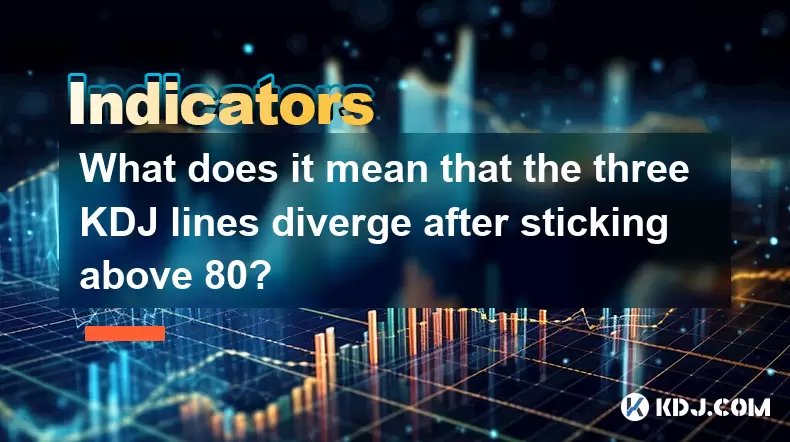
Understanding KDJ Indicator Basics
The KDJ indicator is a momentum oscillator widely used in cryptocurrency technical analysis to identify overbought and oversold conditions. It consists of three lines: the %K line, the %D line, and the %J line. The %K line is the fastest and reflects the current price momentum, while the %D line is a smoothed version of %K, acting as a signal line. The %J line represents the divergence between %K and %D and is the most volatile. These lines are calculated based on a formula involving the highest high, lowest low, and closing price over a specific period, usually 9 candles.
When all three lines are above 80, it traditionally signals an overbought condition. This means that buying pressure has pushed the price to a relatively high level compared to recent performance, increasing the likelihood of a pullback or correction. However, being overbought does not automatically mean a reversal will occur immediately. In strong uptrends, especially in volatile markets like cryptocurrency, the KDJ can remain above 80 for extended periods.
What Does "Sticking Above 80" Indicate?
When the three KDJ lines stick above 80, it suggests sustained bullish momentum. This condition often occurs during powerful upward price movements in cryptocurrencies such as Bitcoin or Ethereum, where investor enthusiasm drives prices higher despite traditional overbought signals. The term "sticking" implies that the lines remain in the overbought zone without a significant downward crossover or retreat.
During this phase, the %K and %D lines may remain close or even cross multiple times while staying above 80. The %J line, being more sensitive, might spike much higher, reflecting extreme short-term momentum. Traders should not interpret this as a sell signal immediately. Instead, it's a sign of strength in the trend, but one that requires caution as the market becomes increasingly stretched.
Meaning of Divergence After Sticking Above 80
The key event in your query is the divergence of the three KDJ lines after they have stuck above 80. This refers to a situation where the previously aligned or intertwined lines begin to separate in behavior. For example, the %K line starts descending, the %D line flattens, and the %J line plunges sharply, while the price may still be moving sideways or even rising slightly.
This divergence suggests weakening momentum despite the price remaining strong. It often acts as an early warning signal that the bullish momentum is starting to fade. The separation of the lines indicates a loss of synchronization in momentum, with the fastest line (%K) reacting first to reduced buying pressure, followed by the slower %D, while the %J line overextends and snaps back.
In cryptocurrency trading, such divergence after prolonged overbought conditions can precede a pullback, consolidation, or trend reversal. It’s particularly significant when observed on higher timeframes like the 4-hour or daily charts, as it reflects broader market sentiment shifts.
How to Identify and Confirm This Divergence Pattern
To detect this pattern accurately, follow these steps:
- Open a cryptocurrency chart on a platform like TradingView or Binance and apply the KDJ indicator with default settings (9,3,3).
- Wait for the KDJ lines to rise and remain above 80 for at least 3 to 5 consecutive candles.
- Observe the behavior of each line as they begin to separate: look for the %K line turning downward, the %D line losing upward slope, and the %J line dropping rapidly from a high peak.
- Compare price action during this period: if the price continues to make higher highs while the KDJ lines diverge downward, this confirms a bearish divergence.
- Use volume analysis to strengthen the signal: declining volume during price increases supports weakening momentum.
It’s essential to avoid acting on this signal in isolation. Combine it with other tools such as support/resistance levels, moving averages, or RSI readings to increase accuracy. For instance, if the price approaches a major resistance level while KDJ shows divergence, the probability of a reversal increases.
Practical Trading Implications and Risk Management
When the three KDJ lines diverge after sticking above 80, traders may consider adjusting their positions. For those holding long positions, it may be prudent to secure partial profits or tighten stop-loss orders. For traders seeking short opportunities, this pattern can signal a potential entry point, but only after confirmation.
Confirmation can come in several forms:
- A crossover of %K below %D while both remain above 80.
- The %J line dropping below 100 or even 80, indicating momentum exhaustion.
- A bearish candlestick pattern such as a shooting star or engulfing pattern appearing at the same time.
- Price failing to break a key resistance level with decreasing volume.
Risk management is critical. Set stop-loss orders above the recent swing high to limit downside risk. Avoid entering full short positions based solely on KDJ divergence, as crypto markets can remain irrational longer than expected. Use position sizing to ensure no single trade risks more than 1-2% of your trading capital.
Common Misinterpretations and Pitfalls
A frequent mistake is assuming that KDJ above 80 always means a sell signal. In trending markets, especially during bull runs, the indicator can stay overbought for long durations. Acting prematurely on overbought readings can lead to missed gains.
Another error is ignoring the context of the divergence. Not all divergences lead to reversals. Some result in only minor pullbacks before the trend resumes. Traders must assess the broader market structure—whether the asset is in a strong uptrend, ranging, or showing signs of exhaustion.
Also, using KDJ on very short timeframes like 1-minute or 5-minute charts can generate false signals due to market noise. Stick to 1-hour or higher timeframes for more reliable readings, especially when analyzing divergence patterns.
FAQs
What is the difference between KDJ divergence and MACD divergence?
While both detect momentum shifts, KDJ divergence focuses on overbought/oversold conditions using stochastic principles, making it more sensitive to short-term price changes. MACD divergence relies on moving average convergence and is better suited for identifying trend strength over longer periods. KDJ reacts faster, which can lead to more false signals in volatile crypto markets.
Can KDJ divergence occur below 20, and what does it mean?
Yes, when the three KDJ lines stick below 20 and then diverge, it indicates an oversold condition with weakening bearish momentum. If the price is making lower lows while the KDJ lines start rising, this forms a bullish divergence, suggesting a potential upward reversal.
How do I adjust KDJ settings for cryptocurrency trading?
The default (9,3,3) works for most cases. However, for slower signals, increase the period to (14,3,3). For faster reactions on lower timeframes, try (5,3,3). Always backtest changes on historical data before live trading.
Does KDJ divergence work the same on all cryptocurrencies?
The indicator functions similarly across assets, but its reliability varies. Major coins like BTC and ETH tend to produce clearer signals due to higher liquidity. Low-cap altcoins with erratic price swings may generate frequent false divergences due to manipulation or low trading volume.
Disclaimer:info@kdj.com
The information provided is not trading advice. kdj.com does not assume any responsibility for any investments made based on the information provided in this article. Cryptocurrencies are highly volatile and it is highly recommended that you invest with caution after thorough research!
If you believe that the content used on this website infringes your copyright, please contact us immediately (info@kdj.com) and we will delete it promptly.
- Ozak AI: Can This Underdog Crypto Achieve a Bull Run to $1?
- 2025-07-31 22:30:12
- Coinbase Breach: Navigating Insider Risk and Bolstering Security
- 2025-07-31 23:11:55
- Bitcoin Rebounds, WeWake Presale Gains Traction: What's the Buzz?
- 2025-07-31 22:30:12
- Bitcoin, Altcoins, and Volume Watchlists: Decoding the Crypto Landscape
- 2025-07-31 23:11:55
- Tron, Fartcoin, and BlockchainFX: What's Trending (and What's Not) in the Crypto World
- 2025-07-31 21:32:19
- Bitcoin, Corporate Investments, and Sustainability: A New Era or Fleeting Fad?
- 2025-07-31 20:50:14
Related knowledge

How can you use the MACD histogram to determine trend strength?
Jul 31,2025 at 11:10pm
Understanding the MACD Histogram and Its ComponentsThe MACD (Moving Average Convergence Divergence) histogram is a visual representation of the differ...
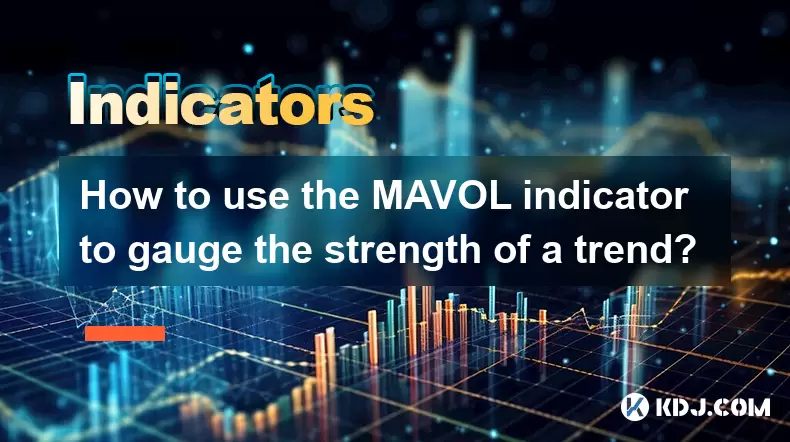
How to use the MAVOL indicator to gauge the strength of a trend?
Jul 31,2025 at 09:57pm
Understanding the MAVOL Indicator in Cryptocurrency TradingThe MAVOL indicator, short for Moving Average of Volume, is a technical analysis tool widel...
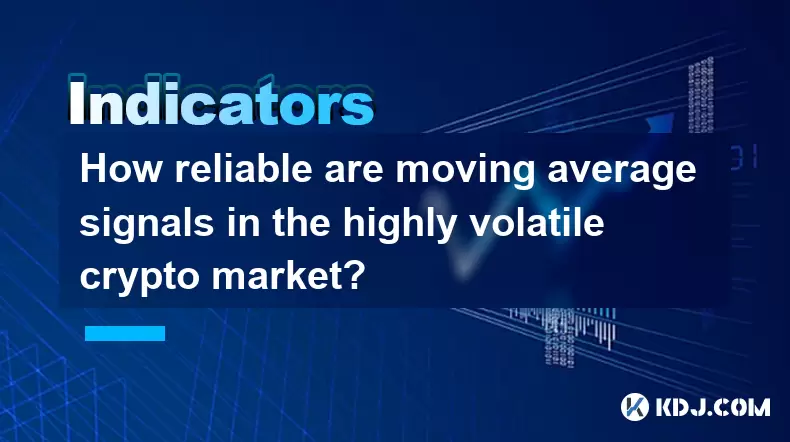
How reliable are moving average signals in the highly volatile crypto market?
Jul 31,2025 at 08:36pm
Understanding Moving Averages in Cryptocurrency TradingMoving averages (MAs) are among the most widely used technical indicators in the cryptocurrency...
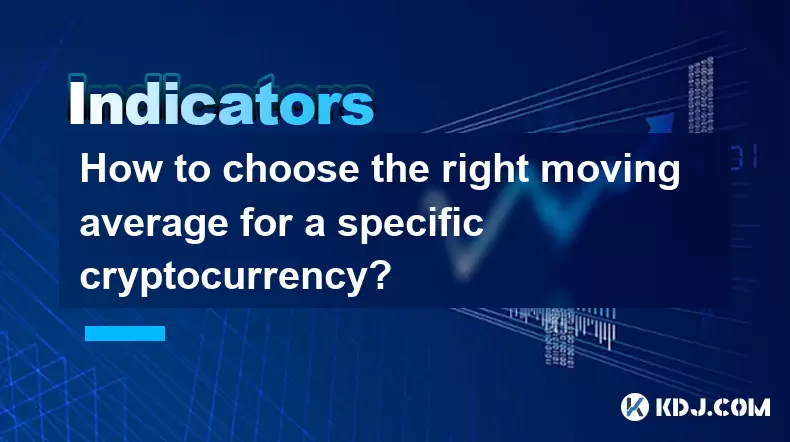
How to choose the right moving average for a specific cryptocurrency?
Jul 31,2025 at 10:29pm
Understanding the Role of Moving Averages in Cryptocurrency TradingMoving averages are foundational tools in technical analysis, widely used by crypto...
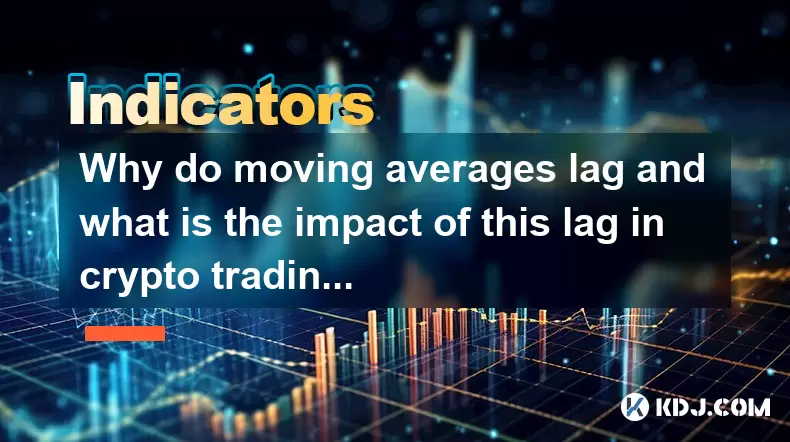
Why do moving averages lag and what is the impact of this lag in crypto trading?
Jul 31,2025 at 08:07pm
Understanding the Concept of Moving Averages in Crypto TradingMoving averages are among the most widely used technical indicators in cryptocurrency tr...
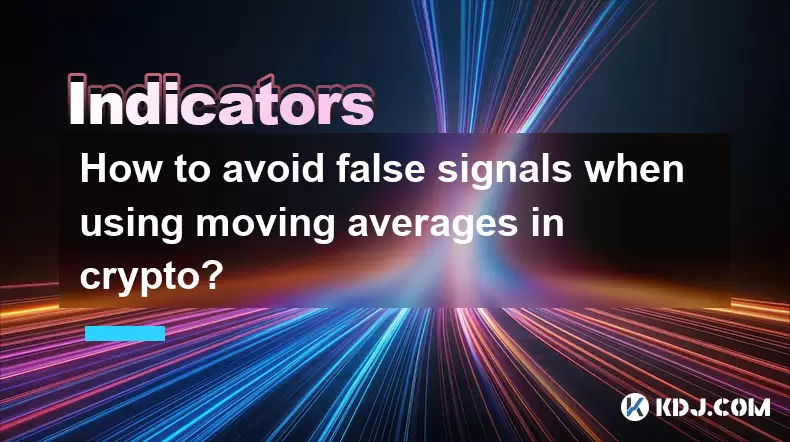
How to avoid false signals when using moving averages in crypto?
Jul 31,2025 at 11:29pm
Understanding Moving Averages in Cryptocurrency TradingMoving averages are among the most widely used technical indicators in the cryptocurrency marke...

How can you use the MACD histogram to determine trend strength?
Jul 31,2025 at 11:10pm
Understanding the MACD Histogram and Its ComponentsThe MACD (Moving Average Convergence Divergence) histogram is a visual representation of the differ...

How to use the MAVOL indicator to gauge the strength of a trend?
Jul 31,2025 at 09:57pm
Understanding the MAVOL Indicator in Cryptocurrency TradingThe MAVOL indicator, short for Moving Average of Volume, is a technical analysis tool widel...

How reliable are moving average signals in the highly volatile crypto market?
Jul 31,2025 at 08:36pm
Understanding Moving Averages in Cryptocurrency TradingMoving averages (MAs) are among the most widely used technical indicators in the cryptocurrency...

How to choose the right moving average for a specific cryptocurrency?
Jul 31,2025 at 10:29pm
Understanding the Role of Moving Averages in Cryptocurrency TradingMoving averages are foundational tools in technical analysis, widely used by crypto...

Why do moving averages lag and what is the impact of this lag in crypto trading?
Jul 31,2025 at 08:07pm
Understanding the Concept of Moving Averages in Crypto TradingMoving averages are among the most widely used technical indicators in cryptocurrency tr...

How to avoid false signals when using moving averages in crypto?
Jul 31,2025 at 11:29pm
Understanding Moving Averages in Cryptocurrency TradingMoving averages are among the most widely used technical indicators in the cryptocurrency marke...
See all articles

























































































